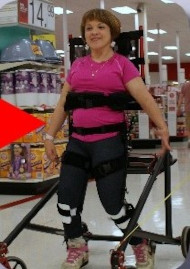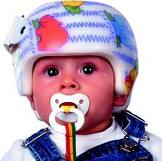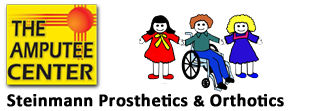We provide free initial consultations to discuss orthotic options and will work with you, your healthcare providers and your insurance, in order for you to achieve your highest activity level, and until you are satisfied with your mobility.
Call us for questions or for more information. Below are frequently asked questions about orthotics, which are named for the joints/segments they manage.
What are orthotics?
Orthotics (orthoses, orthopedic braces) are medical devices for adults and children, designed to:
- protect: stablize, immobilize, or support a weakened joint or body part, protect against injury
- correct: help prevent or correct musculoskeletal deformities
- support: help with safe weight-bearing, maintain alignment, assist with motion.
Orthotics may be custom fabricated or off-the-shelf, and may be worn for acute or chronic conditions.
Examples of indications for orthotics
- bone or joint dysfunction or injury (fracture, gait dysfunction, scoliosis, or drop foot)
- muscle dysfunction or disease (shortening, spasticity, contracture, atrophy, hyperreflexia, hypotonia)
- neurological or vascular conditions or disease (hemiplegia, diplegia, quadriplegia, traumatic brain injury, cerebral vascular accident or stroke, cerebral palsy, muscular dystrophy, multiple sclerosis, brachial plexus injury, spina bifida, arthrogryposis, spinal cord injury, post-COVID conditions)
- maternity orthotics (abdominal support belts)
- wound care devices (orthotics to off-load foot ulcers to help avoid amputation, see Prosthetic Info)
- conditions that affect leg muscles or leg blood vessels (vascular, musculoskeletal or neurological injury or disease; prolonged bedrest). The calf muscles help pump venous blood to the heart, this important pump action is called the calf muscle pump.
Foot, Ankle
Foot Orthoses (FO)
- indicated for alignment and support; prevent, correct, or accommodate foot deformity; improve overall function
- commonly used with therapeutic shoes; footwear modifications may be internal (shoe inserts, heel excavation, pad placement) or external (shoe lift, heel wedge)
- may be off-the-shelf, or custom fabricated
- UCBL (University of California at Berkeley) is a custom shoe insert which helps stabilize flexible foot deformity and hold the heel bone (calcaneus) in proper alignment
Ankle Foot Orthoses (AFO)
- indicated for control of the alignment of the ankle and foot, and the position and motion of the ankle
- patellar tendon bearing AFO helps alleviate ankle/foot weight bearing force, the weight bearing takes place below the patella, at the patellar tendon
Supra Maleolar Orthoses (SMO)
- a low profile design AFO which crosses the ankle, and has less invasive trimlines than the standard AFO
In pediatrics, AFO and SMO are indicated for hypotonia, pronation, toe-walking, triplanar instability in weight bearing, and inability to maintain independent standing.
Ankle Foot Orthoses Footwear Combination (AFO-FC) (AFO plus customized outer footwear)
- indicated for children with certain gait problems, to help with musculoskeletal alignment, stability, and mobility
- provides sensory feedback, to help “teach” a child to keep weight off their toes and “feel” their heel, encourage heel-strike and range of motion, increase proprioception (sense of where their foot is while in motion), and reduce compensations
- positive outcomes documented by highly-regarded practitioners such as Donald McGovern, CPO at the Rehabilitation Institute of Chicago; Elaine Owen, MSc, SRP, MCSP in Scotland; and Beverly Cusick, PT, MS, COF in Colorado
More information on AFO-FC: Current Concepts in Kinematics and Kinetics: AFO-FC
More Footcare Info
Products to help toes, feet: Pedifix Medical Footcare
Footcare information and infographics on effects of poor footwear
List of manufacturers of orthotic-friendly shoes with removable footbed-insole
Knee, Hip, Back
KNEE
Knee Orthoses (KO)
- indicated to protect, stabilize and support knee structure and its surrounding ligaments, tendons, and muscles, from undue loading stress
Knee Ankle Foot Orthoses (KAFO)
- helps to maintain and increase muscle length of the hamstrings and the gastroc-soleus muscles and maintain full range of motion
Hyperextension Knee Orthoses (HEKO)
- indicated with genu-recurvatum, genu-valgum, and genu-varum
HIP
Hip Knee Ankle Foot Orthoses (HKAFO)
- indicated to control hip, leg, and support back and lower body (spina bifida, spinal cord injury)
- help stabilize hips and pelvis when standing and walking with assistive devices
Hip Abduction Orthoses
- indicated after hip dislocation or hip replacement surgery to hold the femur (thigh bone) in the hip socket
- prevent excessive motion in the hip to promote healing
BACK
Thoracic Lumbar Sacral Orthoses (TLSO)
- indicated for postural instabilities of the trunk, neuropathic scoliosis, inability to control position in wheelchair, flexible kyphosis, flexible lordosis
Lumbrosacral Orthoses (LSO)
- indicated for support and immobilization of the lowest part of the spine (lumbar and sacral spine)
Thoracic Lumbar Sacral Hip Knee Ankle Foot Orthoses (TLSHKAFO)
- indicated for support of trunk and lower extremities
- TLSHKAFO may be incorporated in an ambulatory orthotic system (mobility device) for patients with poor trunk control and balance, who cannot ambulate independently, but who have some weight-bearing ability and can generate limited lower-extremity motion

Upper extremity
- orthotics for the hand, wrist, arm, elbow, or shoulder may be used separately or in combination, depending on the medical concern, to provide support, immobilization, and anatomical alignment
Cranial
Cranial protective orthotic
- protective helmet indicated for safety and skull protection (athletics, certain neurological conditions)
Cranial molding orthotic (CMO)
- helmet indicated for pediatric cranial asymmetry
- custom-made based on the child’s unique head measurement
- all cranial devices are FDA regulated, approved for use between ages 3-18 months; AAP recommends between ages 4-12 months
(Hagan JF, Shaw JS, Duncan PM. American Academy of Pediatrics (AAP) Bright Futures: Guidelines for health supervision of infants, children, and adolescents. Pediatrics 4th Edition. 2017) - more information on helmets

Fabric
- compression or body-hugging garments, custom fabricated using strong stretchy material (lycra, deltaflex) with panels to exert pull where needed (such as on the back for scoliosis)
- may be worn as gloves, sleeves, vest, socks, shorts, pants, or as an entire body suit (such as TheraTogs by Beverly Cusick, PT)
- often used with physical, sensory and neuromuscular concerns
- demonstrated to: provide calming sensory feedback; stimulate proprioception (the sense of your limb in space); improve reaching and grasping ability; strengthen proximal stability of the trunk; strengthen distal stability of wrist and hand; reduce involuntary movements for more precise muscle activity; and improve sitting posture1
- often used by athletes to increase proprioception, such as a compression arm sleeve for golfers, or compression shorts for swimmers
- similar products have been developed for dogs with thunder anxiety because the compression provides calming sensory input (such as ThunderShirt)
References
Garland S. The effect of dynamic elastromeric fabric orthoses on upper extremity function of children with cerebral palsy: Systematic review of the literature. Assn of Children’s Prosthetic-Orthotic Clinics. 2013 June;19(2):14-36.
Manufacturers
Manufacturer Information
- ARIZONA AFO
- CASCADE DAFO – We recommend the Cascade DAFO Library for instructional case study videos on the following pediatric topics: low tone pronation, high tone pronation or supination, swing phase inconsistency, excessive plantarflexion toe walking, knee hyperextension, crouching or excess knee flexion, positioning or limited ambulation.
- ULTRAFLEX
- ORTHOMERICA
